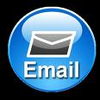Out of all the marine electronics devices, autopilots have remained relatively resistant to making the switch over to NMEA 2000. I recently sent an email to ComNav asking if they intended to offer an upgrade or new autopilot model that is N2K capable. Their response was negative and, in fact, they said they have no plans to switch over to N2K.
In my opinion, this indicates a lack of vision on the part of ComNav's leadership and is certain to put them even further behind the competition should the autopilot market suddenly surprise us and make the jump. In my case, I have almost the entire boat moved over to N2K with the exception of the autopilot, ( and boat speed as I'm waiting for the new Airmar DST 900). Keeping vestiges of 0183 onboard just for the autopilot seems like a weak link in the navigation network. I would love to see the autopilot manufacturers get a poetic boot in the direction of N2K. Hopefully they are just slow and have stuff on the drawing board we don't know about.
The Panbo Forum
Return to Panbo Forum main page »


Raymarine has very half hearted support for N2K on their modular pilots. I just installed one and found a variety of problems. First you have the physical connection problem that requires buying more Raymarine adapters to connect SeaTalkNG to a standard N2K network.
The X30 course computer has connections for SeaTalk, SeaTalkNG and 0183, but it does not bridge any data from NG to Seatalk or 183. I think this reply from Raymarine support sums it up pretty nicely:
***
1) Seatalk NG data is not bridged to Seatalk via the X-30, my recommendation would be to connect the X-30 via NMEA 0183, 4800 baud and that information will be bridged to Seatalk via the X-30 to show the data on the ST6002.
2) No, the X-30 has no controls as to the PGNs being put out by the unit.
3) No, there are no controls N2K or 0183 with the X-30 that will allow you to control the sentences output by the course computer.
***
Once connected to the N2K network, the course computer puts heading data on the network, whether you want it or not.
So it supports N2K and if the whole boat is N2K it's not a problem, but despite all the connectors it will not bridge to SeaTalk or 0183. So if you want to display any N2K data, you need to have an N2K autopilot controller.
This leads to a situation where the course computer will accept waypoint or wind data over N2K, and steer to it correctly, but not display what the course computer is using to steer. Raymarine offers seven control heads for their modular pilots, but only the N2K controller will display N2K data.
It's not clear if the N2K controller will display SeaTalk or 0183 data.
So there is N2K support in pilots, and then there is full support for N2K.
Thanks, Russ. That looks like the most complete explanation of what's going on with Raymarine's N2K pilots that I've seen. I suspect, but don't know for sure, that the NMEA 2000 autopilots from Garmin and Simrad make more complete use of the standard. I think all the control heads involved use N2K and that both manufacturers let you choose N2K sources in their various displays.
Hi Russ,
We recently went on a boat to install Raymarine EV2 auto pilots . What happened is as follows:
The 2 Engines are Yanmar 6BLY3-SPT and it has a single yanmar display to show the Engine Data.
We have a CANbus line which connects from our port processor and goes through the RayMarine EV2 AutoPilot and then Yanmar display then ends in the starboard processor. When we connected only theAUtopilot it was working well. When we connected only Yanmar display it worked without problem but as soon as we connect the AutoPilot and the Yanmar display together on the same network. It said No actuator found and as soon as we disconnect it works fine again.
I am not sure If this is an ID conflict problem or something else. Could you please give me your opinion on this ?
Amrit